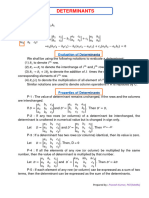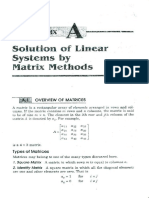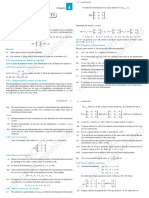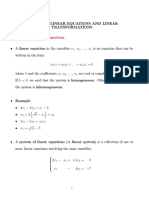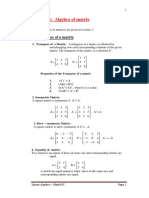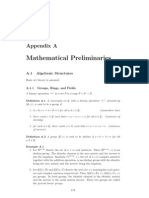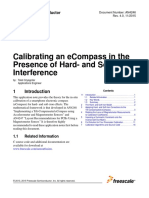0% found this document useful (0 votes)
48 views20 pagesDeterminant Expansion & Matrix Inversion
The document discusses properties of determinants, specifically that expanding a determinant using cofactors from a different row or column than the one being expanded will always yield zero. It provides an example of expanding a 2x2 matrix using the second row but first row cofactors. The document also introduces Cramer's rule for solving systems of linear equations, which involves replacing the right side vector into each column of the coefficient matrix to obtain the solution components.
Uploaded by
Sahana NayakaCopyright
© © All Rights Reserved
We take content rights seriously. If you suspect this is your content, claim it here.
Available Formats
Download as PDF, TXT or read online on Scribd
0% found this document useful (0 votes)
48 views20 pagesDeterminant Expansion & Matrix Inversion
The document discusses properties of determinants, specifically that expanding a determinant using cofactors from a different row or column than the one being expanded will always yield zero. It provides an example of expanding a 2x2 matrix using the second row but first row cofactors. The document also introduces Cramer's rule for solving systems of linear equations, which involves replacing the right side vector into each column of the coefficient matrix to obtain the solution components.
Uploaded by
Sahana NayakaCopyright
© © All Rights Reserved
We take content rights seriously. If you suspect this is your content, claim it here.
Available Formats
Download as PDF, TXT or read online on Scribd
/ 20








